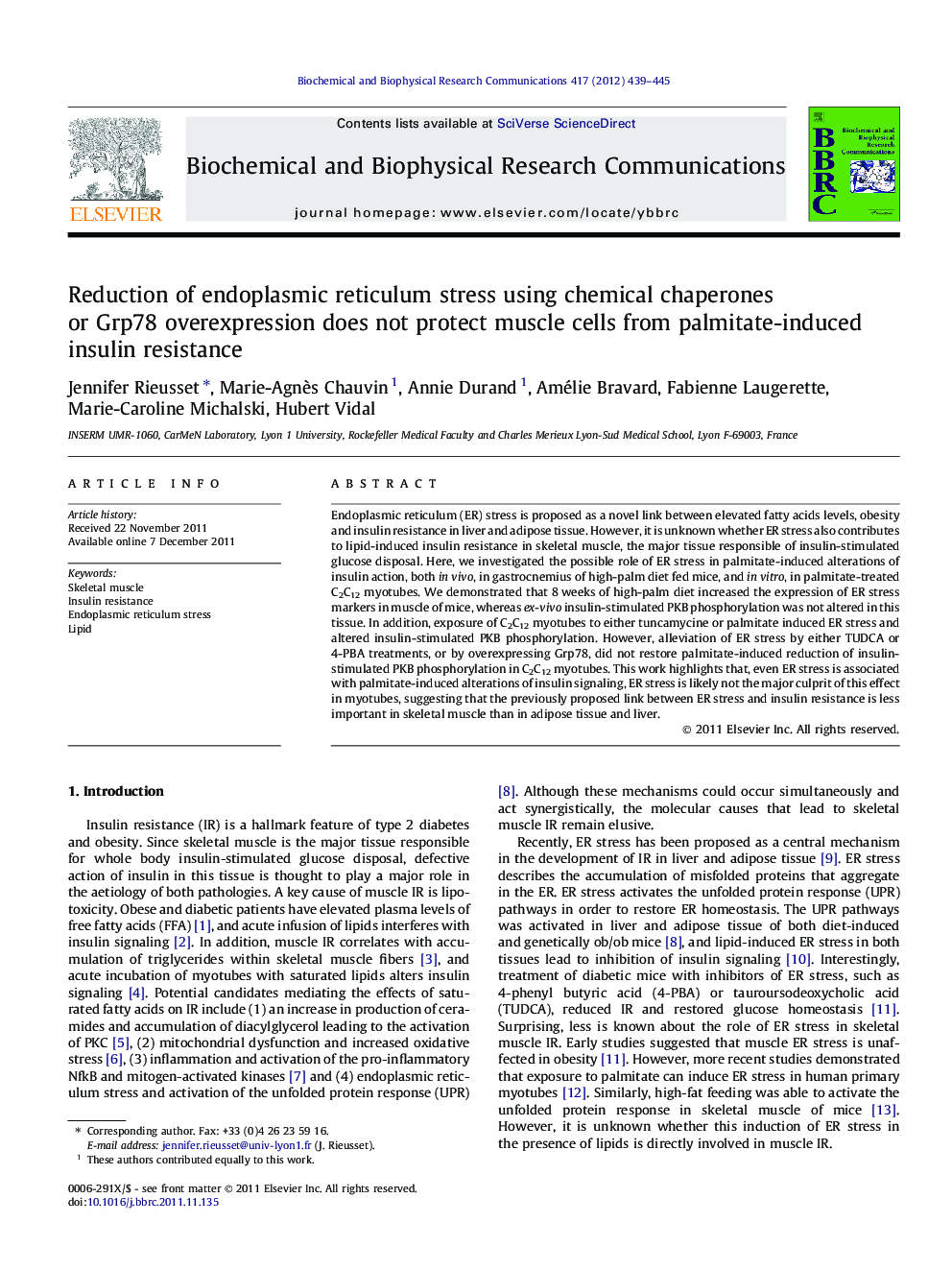| Article ID | Journal | Published Year | Pages | File Type |
|---|---|---|---|---|
| 1930141 | Biochemical and Biophysical Research Communications | 2012 | 7 Pages |
Endoplasmic reticulum (ER) stress is proposed as a novel link between elevated fatty acids levels, obesity and insulin resistance in liver and adipose tissue. However, it is unknown whether ER stress also contributes to lipid-induced insulin resistance in skeletal muscle, the major tissue responsible of insulin-stimulated glucose disposal. Here, we investigated the possible role of ER stress in palmitate-induced alterations of insulin action, both in vivo, in gastrocnemius of high-palm diet fed mice, and in vitro, in palmitate-treated C2C12 myotubes. We demonstrated that 8 weeks of high-palm diet increased the expression of ER stress markers in muscle of mice, whereas ex-vivo insulin-stimulated PKB phosphorylation was not altered in this tissue. In addition, exposure of C2C12 myotubes to either tuncamycine or palmitate induced ER stress and altered insulin-stimulated PKB phosphorylation. However, alleviation of ER stress by either TUDCA or 4-PBA treatments, or by overexpressing Grp78, did not restore palmitate-induced reduction of insulin-stimulated PKB phosphorylation in C2C12 myotubes. This work highlights that, even ER stress is associated with palmitate-induced alterations of insulin signaling, ER stress is likely not the major culprit of this effect in myotubes, suggesting that the previously proposed link between ER stress and insulin resistance is less important in skeletal muscle than in adipose tissue and liver.
► High-palm diet induces ER stress markers in skeletal muscle of mice. ► Palmitate induces ER stress markers and alters insulin action in C2C12 myotubes. ► Alleviation of ER stress do not restore palmitate-induced decrease of insulin action. ► ER stress is probably not a major actor of muscle insulin resistance.
